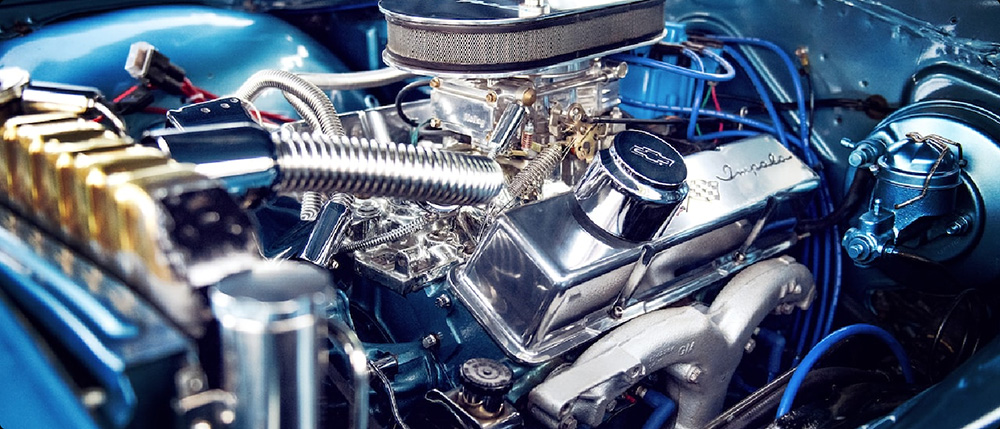Unveiling the Heart of Precision: An Introduction to Servo Motors
Servo motors have become ubiquitous in modern automation, robotics, CNC machinery, and even hobbyist projects. Their ability to deliver accurate position, speed, and torque control makes them indispensable in fields requiring precise motion control. But what makes these compact devices so powerful and versatile? The answer lies not just in their design but in the way they are built—every tiny component contributing to their seamless operation.

At the very core of understanding a servo motor lies a detailed look at its underlying parts. Visualizing these components through a servo motor parts diagram offers invaluable insights, whether you're troubleshooting a faulty unit, designing your own robotic arm, or simply deepening your grasp of motor technology.
What is a Servo Motor?
A servo motor is a rotary actuator or linear actuator that allows for precise control of angular or linear position, velocity, and acceleration. Unlike simple DC motors, servo motors incorporate feedback mechanisms—such as encoders or resolvers—that continuously relay vital data back to the control system, ensuring the motor operates exactly as intended.
Servos are often defined by their control system—commonly called a servo control loop. This loop compares the desired position with the actual position, and adjusts motor input accordingly. This continuous feedback ensures high accuracy and responsiveness, making servo motors ideal for applications that demand millimeter precision or fine motor control.
The Anatomy of a Servo Motor: A Glimpse into Its Components
To truly appreciate how a servo motor functions, reviewing its parts diagram reveals the interconnected symphony of components that bring precision motion to life. Let’s explore these elements in detail:
Motor Housing (Enclosure): This protective shell shields the inner components from dust, dirt, and moisture. It’s often made of durable plastic or metal, designed to withstand operational stresses and environmental conditions.
Armature / Rotor: The rotor is the rotating part of the motor. It contains the windings or coils through which current flows, generating magnetic fields that produce torque. Its design—laminated steel cores with copper wire windings—aims to maximize efficiency and minimize energy losses.
Stator: The static part that surrounds the rotor, composed of coils or permanent magnets depending on the type of servo motor. The stator’s magnetic fields interact with those of the rotor, causing rotational movement.
Feedback Device (Encoder or Resolver): One of the most critical components, the feedback device continuously monitors the shaft’s position and sends this data to the control system. Encoders provide digital signals, while resolvers offer analog feedback. Their accuracy influences the overall performance of the servo.
Motor Shaft: The axis connected to the load or gear system. Its rotation corresponds to the movement programmed into the servo's control logic. The shaft transfers energy from the rotor to external mechanisms.
Gearbox / Gear Train: Many servo motors incorporate gear reducers to enhance torque or adjust speed. Gear trains modify the motor’s output to match application needs and improve control precision. Gears can be spur, planetary, or harmonic, each suited for specific tasks.
Drive Electronics / Amplifier: This component supplies the necessary voltage and current to the motor windings. It interprets control signals and modulates power delivery accordingly, often making use of pulse-width modulation (PWM) to fine-tune motor performance.
Power Supply Connection: Servos are powered via DC supply lines, typically ranging from 4.8V to 6V in hobbyist models or higher voltages for industrial applications. Power stability is vital for consistent operation.
Control Circuit Board: Embedded within the servo mechanism, this circuit interprets input commands, implements feedback loops, and manages power distribution, ensuring that the motor responds accurately to external signals.
Cooling Elements: In high-torque or high-speed applications, internal fans or cooling fins dissipate heat generated during operation, safeguarding components and maintaining efficiency.
Understanding these core parts comes before delving into diagnostics, modifications, or advanced engineering applications. Visual diagrams, or schematics, clarify how each component interlinks and functions as part of an integrated system, transforming electrical inputs into precise mechanical outputs.
Next, we’ll explore how each of these parts collaborates during operation and delve into common issues and maintenance tips to keep your servo motor functioning smoothly. Stay tuned for part 2, where we’ll include specific diagrams, troubleshooting strategies, and insights into customizing your servo motor for specialized tasks.
Established in 2005, Kpower has been dedicated to a professional compact motion unit manufacturer, headquartered in Dongguan, Guangdong Province, China.




































